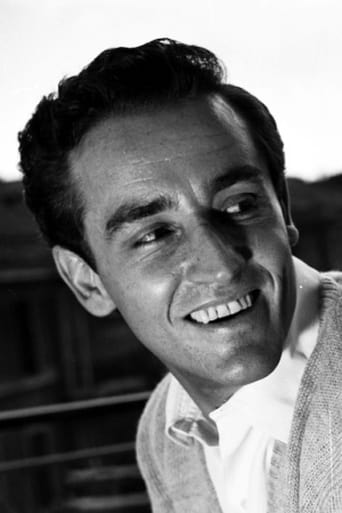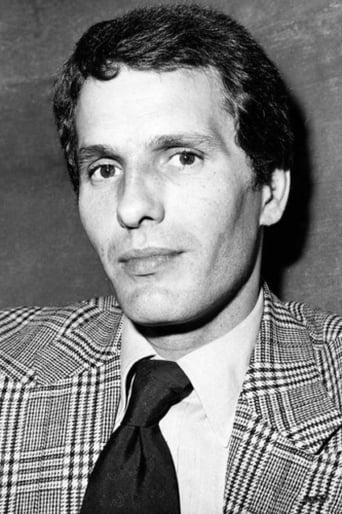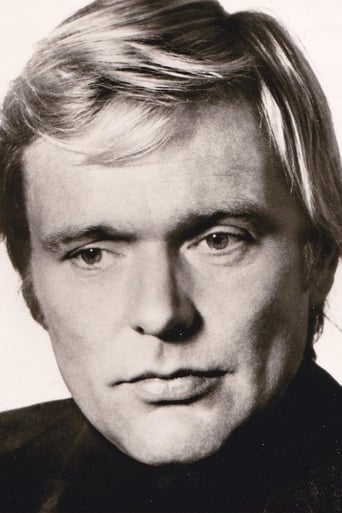Develiker
terrible... so disappointed.
Lucybespro
It is a performances centric movie
Twilightfa
Watch something else. There are very few redeeming qualities to this film.
Joanna Mccarty
Amazing worth wacthing. So good. Biased but well made with many good points.
MARIO GAUCI
This is the first Valerio Zurlini film I have watched and, ironically, it was his last (and arguably most ambitious) undertaking but which can hold its own alongside its contemporaries among the classics of World Cinema; for the record, I also own THE GIRLS OF SAN FREDIANO (1954) and THE CAMP FOLLOWERS (1965) on VHS and had erased GIRL WITH A SUITCASE (1960) - without even watching it! - in anticipation of its 2-Disc Set release by No Shame (which incorporates Zurlini's VIOLENT SUMMER [1959]).Anyhow, THE DESERT OF THE TARTARS is practically an intellectual, existentialist version of "Beau Geste" in which very little actually happens during its 2½ hour running-time (and, thus, may seem boring to the uninitiated) but, for more adventurous film fans, however, it's a mesmerizing and truly evocative experience with a strong anti-war statement to make. Unsurprisingly perhaps, it is hardly ever shown on Italian TV - with the most recent occasion being on the very last day of my 3-month stay in Hollywood late last year, which meant that I had to miss it (although I was already aware of No Shame's 2-Disc Set, which was released around the same time).The cast is made up of a once-in-a-lifetime roster of international film stars: Vittorio Gassman, Giuliano Gemma, Helmut Griem, Philippe Noiret (who died last week, alas), Jacques Perrin (who has the lead role and also did duty as one of the producers), Francisco Rabal, Fernando Rey, Laurent Terzieff, Jean-Louis Trintignant and Max von Sydow! Incredibly, it's Gemma who stands out in a rare villainous turn as the sadistic Major - though Max von Sydow as the disgraced Captain and Vittorio Gassman as the ageing Commander of the Fort are quietly impressive in their own way. While the first half is deliberately-paced, eliciting its own particular ambiance and etching all the various characters, by comparison, the latter stages are somewhat rushed - as the years fly by and the fort changes its command several times, so as to bring the story to its main theme - that of the remote company, seen constantly drilling in the hope of an attack by enemy forces which, when it finally arrives, they seem incapable of dealing with adequately! The beautiful cinematography of the splendid Iranian desert location (with the interiors filmed in Rome) is by Luciano Tovoli and Ennio Morricone's score, rendered in its entirety on the CD found in No Shame's SE DVD, is suitably majestic and melancholic. The supplements, then, aren't prolific but quite nicely done nevertheless - though only Tovoli's 35-minute interview goes into any real detail about the making of the film (and even that includes copious references to his collaborations with other Italian masters such as Michelangelo Antonioni and Dario Argento).
Terrell-4
The Desert of the Tartars is an epic movie where nothing happens over 2 hours and 21 minutes...except to show us the gradual and fascinating disintegration of a group of military officers in an isolated outpost of empire who are full of pride and who lead lives as pointless as their careers. It helped me understand things better when I looked up the author, Dino Buzzati. His book was published in 1940 shortly after he had served some time in Ethiopia as Mussolini postured and killed his way to a new Roman empire. Many thought the book was a veiled reference to the sort of empty grandiosity Mussolini embodied. The book became widely available only after WWII. Here we have a group of officers, none of whom have ever seen combat except for one who can barely move, awaiting an attack that may never happen, whose purpose in their lives can only come about through glorious battle. And some of these officers are convinced that some sort of activity far off in the desert can sometimes be seen. Can it be the ghosts and dreams of the long-ago Tartar invaders? They talk of the "enemy" as if it were some anonymous thing. The atmosphere is claustrophobic, with the lives of these men governed by punctilious manners and regulations. These are officers whose code of conduct has them practice fencing with each other while their men wait behind machine guns. We see all this through Lieutenant Drogo (Jacques Perrin) who arrives at Fort Bastiano, a great hulking desert fortress made of mud brick, in 1907 on his first posting. "Beyond the fort there is a desert," he is told. "And then, nothing. The desert of the Tartars. They may even have crossed it, centuries ago, but they vanished after destroying the ancient city. The desert has kept their name. But the older that history is, the more men change it into legend. So we don't know what's true and what isn't." In my view, the sad heart of the film is Captain Horvitz, played with great power by Max von Sydow. Years ago, Horvitz had seen the lights of the enemy, had given the alarm and no attack occurred. He has refused all opportunity to leave Fort Bastiano. Years pass and he becomes commanding officer. In time, he is sent away. "I hope you will be in command of the fort when the enemy will attack," he tells Captain Drogo as he prepares to leave, "and I know it will, even if I was ordered to ignore it. What nonsense and what disregard. I might have been useful in wartime. I'm so regretful. I waited for such a long time...without knowing why..." Many officers we met with Lt. Drogo have died, become unbalanced, and in many cases have been simply sent away as their superiors gradually have reduced the strength of the fort. More time slips away and Drogo, now second in command, gray and ill, is in turn sent away from the fort. Drogo had become as fixated on Fort Bastiano and the "enemy" as Horvitz became....and yet now there seems there may be a genuine attack. Yet, when Drogo was still new to the fort he was convinced that his posting was an error. The sympathetic doctor gives him a letter with a medical reason for a new assignment. "You are wise to leave," Doctor Major Rovin tells him. "I was sent here by mistake," Drogo tries to explain. "Here or elsewhere," Rovin tells Drogo, "we're all somewhere by mistake." This sense of passionless inevitability runs through the film. One would think that nearly two-and-a-half hours of this would be tedious. It isn't. The director, Valerio Zerlini, explores some serious themes. Is there an enemy or not? Has the fort been purposefully weakened for unknown schemes? Where actually is the fort located? (It seems it takes only three days by horseback to reach the middle of the desert after leaving the green hills and valleys of Italy...or is it even Italy?) I don't think any of this matters. The film, for me, is an allegory of how easily men can slip into the pointlessness of duty, pride, obedience and glory. Well, this approach may be a bit existential, but we can make what we want of it as we see the progression of disintegration played off against the essential meaninglessness of these men's lives. What helps the movie immeasurably are two other factors. First, there is a whole roster of first-rate, skilled European actors, all of whom know how to underplay. In addition to von Sydow, we have Vittorio Gassman, Helmut Griem, Philippe Noiret, Fernando Rey, Jean-Louis Trintignant and Giuliano Gemma, among others. Second, there is the looming presence of the desert and Fort Bastiano itself. Much of the film was shot in Iran in the ancient city of Bam. Fort Bastiano is actually Arg-e-Bam, the Citadel of Bam. The citadel and the ancient town next to it were built of mud brick and straw eons ago. When I saw the first shot of Fort Bastiano I thought I must be seeing some early version of Computer Generated Overkill. The Citadel of Bam was huge, towering over the ancient ruins. Tragically, a massive earthquake hit Iran in 2003 with Bam at the epicenter. The only thing remaining of the Citadel, literally, is a huge mound of clay-brick rubble. Iran says the Citadel will be rebuilt, but it will take years. It is a huge cultural loss.
thalenoi
The story in the movie cannot be dated, which makes it timelessly valid. It is about life that passes by for a military career that will never see war, nor become the commander in chief of a fortress in the desert.Nevertheless, it is known the enemy is approaching and preparing for war. Everything is done in the plot to avoid lower military rank to be knowledgeable about the upcoming war. The scenery of the shots in the Marrocco desert and the brown-red fortress are marvellous. Live languishes in the fortress, struggles are depicted masterly amid officers to reach promotion in the military hierarchy. All for nothing, deeply useless. This movie depicts the stupidity of nations who prepare for war which hopefully will never occur. Unfortunately we lost the desert of the tartars, because war caught-up with humanity.
liancu
A film that marked me forever, If you've never seen this movie, then you have to see it, it deserves a 10/10 (A )note. I'm looking forward to see this film once again in my life and it will be the spleen. In my life there were 2 film that marked me this one and The Woman Of The Dunes.





